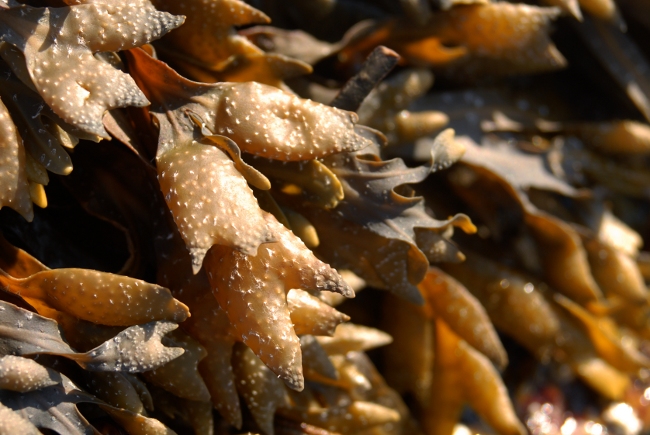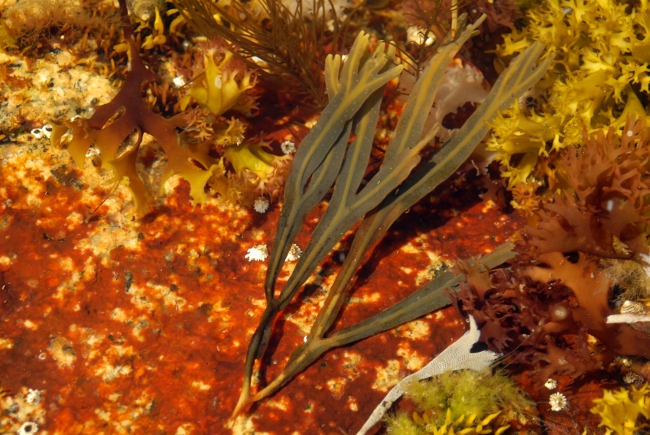![]() Caution: The rocks of the intertidal are often covered with very slippery algae. Use caution and supervise small children.
Caution: The rocks of the intertidal are often covered with very slippery algae. Use caution and supervise small children.
![]() Caution: Bug spray and suntan lotion can upset the chemical balance of tidepools and cause harm to the species that live there. Wash your hands before exploring tidepools.
Caution: Bug spray and suntan lotion can upset the chemical balance of tidepools and cause harm to the species that live there. Wash your hands before exploring tidepools.
Overview
22,000 years ago, the entire coastline of the North Shore was covered by Glaciers that scoured the surface of the land. Softer sedimentary and metamorphic rocks were eroded into sediment which naturally settled in areas of lower wave energy and lower elevation. Harder rocks like Granite did not erode as much and form much of our rocky shoreline. On the North Shore, the rocky coast runs intermittently from East Point in Nahant to the Northern portion of Cape Ann.
Rocky shorelines are some of the most unique and interesting coastal habitats to visit. Strong waves pound many of these areas continuously and the daily tides leave some of its inhabitants stranded above water for hours at a time. The species living on the rocky intertidal zone have evolved to survive this harsh habitat.
Because the tides are gradual and have an average range of over 8 feet, areas that are high on the rocky shore spend more time out of water and areas that are low spend little or no time out of water. The species living in these areas have become ‘specialized’ to different bands or zones depending primarily on how long they need to survive out of water but also the strength of the waves, the steepness of the rock and how much food is available.
Splash Zone
The very highest level of the rocky shore is rarely if ever submerged by the tides. Species living in this area are most prone to drying out, overheating and predation. Very few species survive well in this zone and it is mostly populated by algae and lichens.
High Intertidal
The high intertidal zone is submerged by high tide twice per day or less. Species living in this area must adapt to spending large portions of the day out of water and need ways to cope with drying out. On the North Shore, Northern Rock Barnacles (Semibalanus balanoides), also called Acorn Barnacles dominate this zone. This barnacle spends it’s adult life attached to the surface of the rocks by a strong membrane and has an opening in the top of it’s body that closes tightly during low tide to prevent drying out. During high tide, barnacles open their shell and extend feathery legs to ‘kick’ food into their mouths. Barnacles can occasionally be seen feeding in shaded tidepools.
Middle Intertidal
The Middle intertidal zone is also covered twice per day by the tide but for longer than the high tide zone. This middle zone supports several types of seaweed including knotted wrack (Ascophyllum nodosum) and bladderwrack (Fucus vesiculosus). Both of these species posses special air bladders which allow it to float when submerged giving it better access to sunlight and nutrients. When the tide is out, the seaweeds lay flat on the rocks forming a thick cover for other species. Dogwhelk and periwinkles can often be found grazing here. Blue mussels also lie in the mid-intertidal zone, often just beneath the knotted wrack and bladderwrack.
Low Intertidal
The low intertidal zone spends most of the day submerged and is only exposed for a short period during low tide. This area harbors a red algae, Irish Moss along with Sea Urchin, Green Crab, Asian Shore Crab and Atlantic Slippersnail.
Tidepools
Tidepools form where seawater becomes trapped in depressions in the rock. Tidepools are excellent places to find and examine sea-life as they may, depending on size and depth, shelter species from all of the other zones including the lower subtidal zone. Excellent tidepools can be found at Halibut Point State Park in Rockport, Castle Rock, Chandler-Hovey Park and Preston/Phillips Beach all in Marblehead.
Sheltered Rocky Shores
Rocky shores can also be found on the North Shore away from the headlands and strong waves. Many of the same species described above can be found on a sheltered rocky shore but some organisms like the Hermit Crab which are not adapted to strong waves can only be found here. Stage Fort Park in Gloucester is an excellent place to explore a sheltered rocky shore.
Common Species
Anemone
Knotted Wrack
Bladder Wrack
Spiral Wrack
Irish Moss
Sea Lettuce
Acorn Barnacles
Blue Mussels
Atlantic Slippersnail
Periwinkles
Dogwinkles
Hermit Crabs
Sea Urchin
Green Crab
Asian Shore Crab
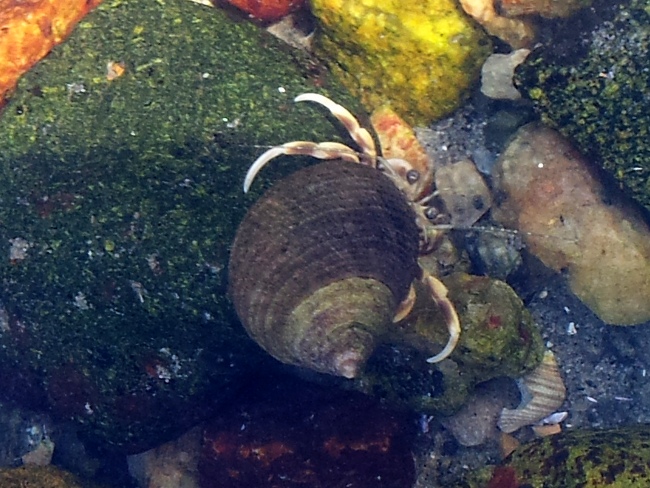 Hermit Crab at Stage Fort Park in Gloucester
Hermit Crab at Stage Fort Park in Gloucester
 Northern Rock Barnacles at Preston Beach in Marblehead.
Northern Rock Barnacles at Preston Beach in Marblehead.
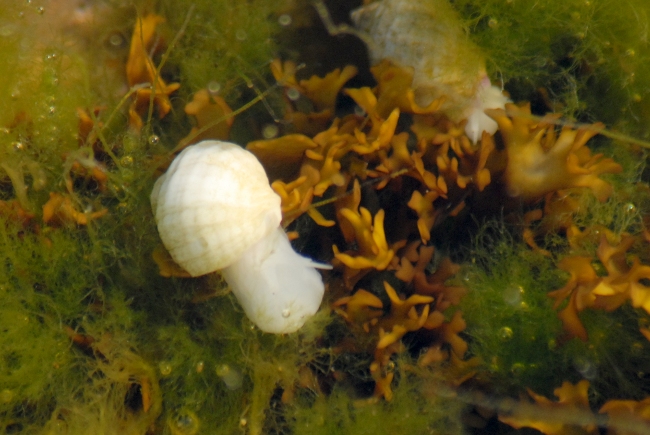 Dogwhelk at Halibut Point State Park.
Dogwhelk at Halibut Point State Park.
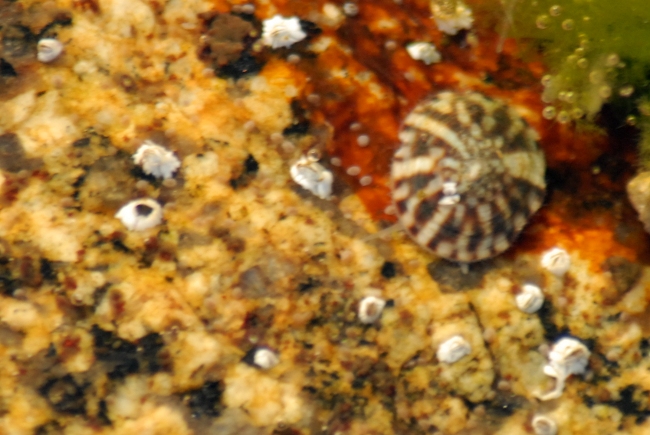 Limpet at Halibut Point State Park.
Limpet at Halibut Point State Park.
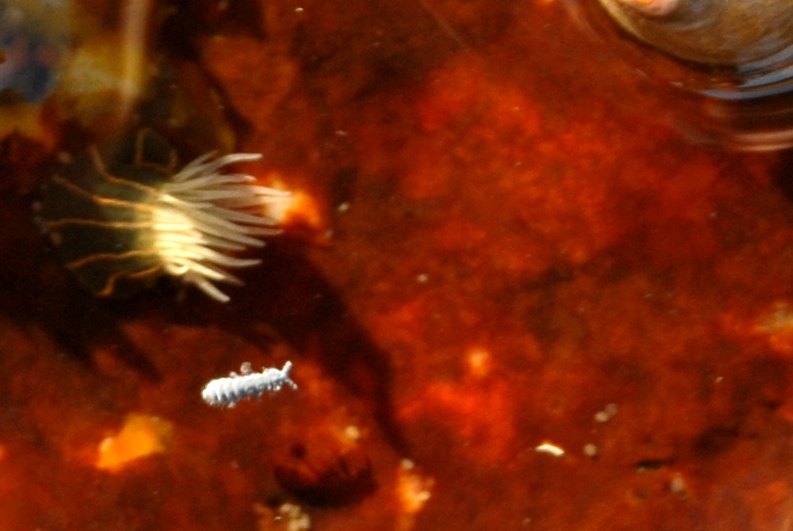 Orange-Striped Green Anemone and anurida maritima at Halibut Point State Park.
Orange-Striped Green Anemone and anurida maritima at Halibut Point State Park.

